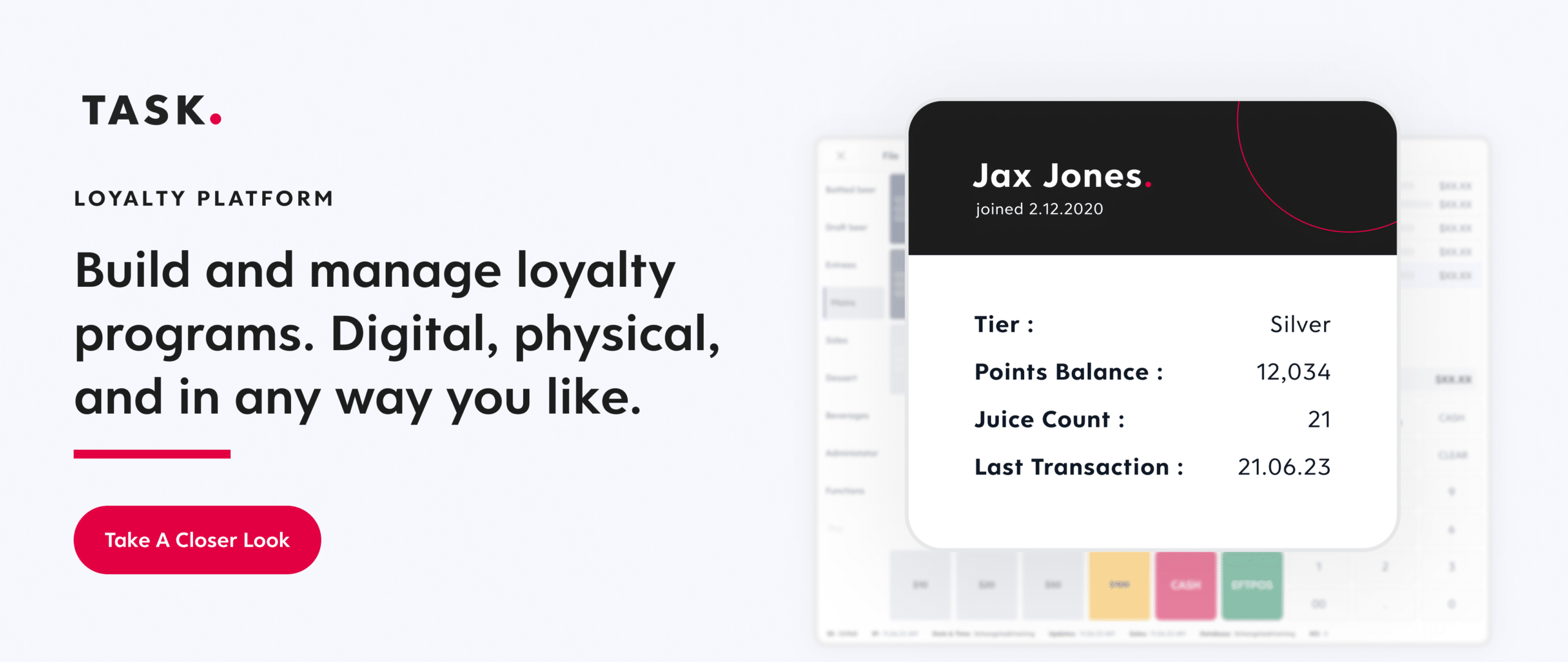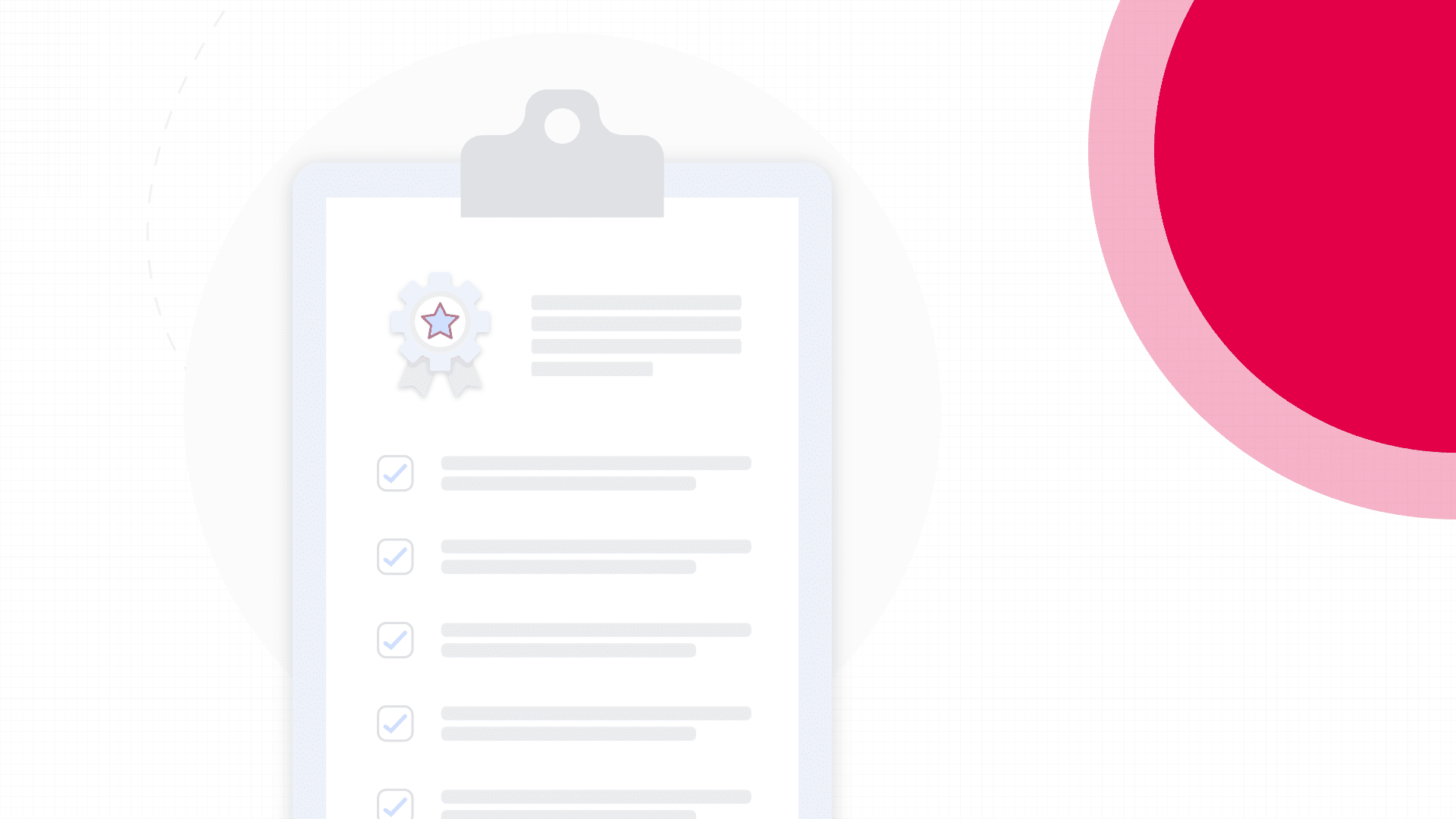Let’s get right down to it: loyalty programs are one of the most underrated yet influential pieces of your entire customer journey. From single-location restaurants to QSR enterprises to 60,000-seat stadiums, loyalty is the single most important part of driving repeat traffic and long-term value from your customers. If you don’t already have a robust loyalty program in place (or if your program isn’t being leveraged properly) then you’re missing out on huge revenue growth opportunities.
The average American household is enrolled in about 22 different loyalty programs. Loyalty participation in the US market alone has reached over 2.6 billion, and it continues to grow as more and more retailers build out their programs to drive sign-ups. The bottom line: giving value through points, rewards, VIP services, and personalized offers works. (Naturally, this supplements great interactions with your staff.) The question for hospitality businesses now is not whether to have a loyalty system, but rather how to deploy a loyalty program that will stand out in the competitive market.
Kerri Linderboom, TASK Group’s Plexure Division Customer Success Manager, explains, “Today is so saturated with content and media. Customers are looking for what’s going to add meaning and impact to their day. They know that they are offering up their data in exchange for some kind of reward – so you have to put in the effort to nurture and grow that relationship.”
The ideal loyalty program will transform into a long-term, ongoing relationship built on that trust and value. Kerri says, “You want to help your customers sift through the noise. You want them to get to the point where they think – I just want to go to my trusted brand, where I know I can get exactly what I want and I’m going to get value for my business in return.”
How To Audit Your Customer Loyalty Program
Boosting your loyalty program is one of the most powerful ways to drive higher customer revenues. Here’s what you can do to make it more competitive.
The results will lead to higher rates of repeat business, which is the key to ongoing revenue growth. A repeat guest is found to spend up to 67 percent more when compared to a customer visiting your brand for the first time. Furthermore, as your number of loyal customers grows, so does your organic, word-of-mouth reach into the market.
Kathryn Byrne, TASK Group’s Chief Strategy Officer, agrees. “Loyalty programs give you a huge learning opportunity to gather feedback, understand more about your customers, and even trial new offers or approaches. The data that you can gather from loyalty is a huge advantage for businesses. Over time, these insights will show you which segments of your customer base are healthy, what products or pricing changes are working, and how best to reduce churn. Ultimately, these valuable pieces of information will help you make better decisions, and that’s going to make you a more efficient business and attractive brand.”
What are the Characteristics of a Great Customer Loyalty Program?
If you look at some of the world’s most successful loyalty programs, you’ll start to see a few patterns.
Take McDonald’s, for example, the shining example of a global, value-driven rewards system. In 2022 alone, they saw over 40 million app downloads, which was near twice the engagement as their next-in-line competitor, Starbucks.
Their program, along with many others topping the charts in loyalty engagement, all centre around a few key attributes:
- They offer a mix of personalized experiences and high-level rewards
- Their digital platforms are easy and simple to download, sign up for, and use
- The program is consistent and reliable
- They create an emotional connection with their brand (McDonald’s tends to invoke a sense of comfort and nostalgia)
No loyalty program will come out of the gates with a perfect, branded system that immediately joins the ranks of McDonald’s and Starbucks. As Kathryn says, “There’s no such thing as a successful plug-and-play loyalty program. It takes careful thought, effort and time investment to build something that will start driving long-term results to your business.”
How to Create a Loyalty Marketing Program That Works
An effective loyalty marketing program can minimize customer churn, increase your revenue, attract new customers and engage existing customers.
Create a Great Customer Loyalty Program in 15 Steps
So where do you start? And how do you strategically improve your loyalty to get better ROI in the future?
1. Define the program objective
First, ask yourself what your key goals are with your loyalty program. Kathryn says, “Loyalty works best when you are crystal clear about the outcomes that you want your program to achieve, and then religiously track and monitor the results so you are constantly improving”.
2. Choose the right type of program
Lay out the structure, figuring out if your system should be based around points, items, subscriptions, or experiences. Every brand will have a different combination of rewards and promotions based on how they want their audience to act.
3. Think about engaging elements that can be added
Where a dine-in restaurant might want to focus on one-time offers for a new menu item, stadiums would be better suited to design exclusive game-day experiences for their top loyalty members. Consider what drives guests to your brand to determine what elements will be most successful.
4. Identify the key drivers of your value proposition
Kathryn explains, “Let’s say your objective is to grow engagement and revenue for your business. In that case, you have to be sure that you have a system in place for tracking those metrics consistently by campaign and linking the results to the Loyalty program by using control groups. Measuring and understanding the key drivers of success are important for the long-term health and growth of the program..”
5. Define the complete loyalty program concept
Don’t forget to consider what your program will look like to the customer. Put everything through the eyes of your guest first, and then ensure that you are simultaneously gathering data and insights every step of the way.
6. Settle on a budget and a timeline
Long-term growth in loyalty requires resources, expertise, and time. Don’t underestimate the potential – but also the investment – that can be required for a good loyalty program.
7. Get a buy-in
The most successful programs usually rely on a technology partner to help. By leveraging support, you will maximize your potential and have the digital capabilities to develop and deploy the technology needed for your program.
8. Use a digital loyalty program supporting software
Kerri explains, “If you only focus on getting consumers in the door when designing your loyalty program, and not the full end-to-end service, then you’ll introduce friction and disruptions to your whole flow when it’s time to actually deploy the program and you have consumers flowing in. You have to make sure your technology has the capabilities to support your program from acquisition to fulfilment.”
9. Reduce the risk of cannibalization
You want to make sure that adding a new program will not push away your existing loyal customers. Start with a small group and try test-and-learn initiatives before involving a large number of customers.
10. Integrate loyalty programs with other channels
Your loyalty should ideally be present across every touchpoint in your digital ecosystem. From your online presence to your mobile app, self-order kiosk, and in-store experiences, your rewards should be consistent, integrated, and easy to understand.
11. Tailor the program for multiple customer segments
Don’t forget the power that loyalty programs give you when it comes to collecting customer data. Be sure to integrate your loyalty system with a database that is connected across channels.
12. Build a culture of feedback and engagement
Incorporate opportunities for feedback into the program to give your customers a sense of ownership and impact on your brand. You can try this through surveys, direct messages, and internal rating opportunities.
13. Build a process for tracking, reporting, and reviewing
Set up thresholds and certain KPIs, develop an ongoing process for measurement and assessment, and closely monitor your real-time metrics. The more in tune you are with how your program is performing, the quicker you will be able to take action to solve any issues.
14. Ensure transparency and a high level of security
Define clear expectations and procedures for your employees. Conduct regular training and audits to catch any discrepancies right away.
15. Update the program regularly to remain relevant and competitive
The best programs incorporate new features or fresh updates every few weeks to ensure that the system is staying relevant and engaging for your guests. Monitor customer interests to gauge where the highest value-adds might be for their experience.
These fifteen elements of building a loyalty program are the stepping stones to a more productive and meaningful relationship between you and your customers. When leveraged appropriately, loyalty programs increase your return rates, maximize your customer lifetime value, and increase your brand stickiness.
To make the most of your potential with a loyalty program, it is important to take advantage of strategic partnerships. Your loyalty program is ultimately a digital implementation, so work with your technology partners to develop a robust, integrated system that will set you up for big-picture business success.

